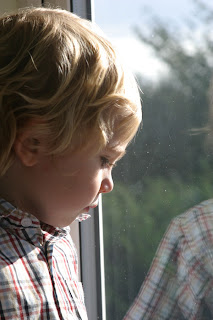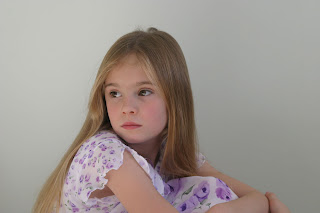My first assignment came back some weeks ago with suggested amendments from my tutor. So I shall post the amendments here together with the comments she made which led to the amendments, if that makes sense?
Black
My tutor commented that using a black subject against a black background presents technical problems, eg lighting, which I should have addressed in my notes. She also wondered if the foreground blur in the image is too dominant.
When I shoot I tend always to use natural light whenever possible. I like the softness of natural light as opposed to harsh studio or on-board flash light. When I took this particular image, i did find that the sunlight was quite harsh, it being around mid-day. I was shooting in the sun room, so i found that if i closed the blinds (which are a light oat colour) the light was diffused enough for the black of the coal to be quite true. I also adjusted the lightness levels in photoshop slightly, just to darken the black a bit more.
Having looked again at this image I can see what my tutor means about the coal in the foreground being too dominant. I often shoot with shallow depth of field, but I agree that the coal in front is too large in the frame to be blurred in this way.
I looked through my shots and came across this one, where the foreground coal is in focus and the smaller lump at the back is blurred.
White
My tutor commented that this was a straightforward and simple composition. She suggested that I expand my notes.
I bought a pot of snowdrops at my local garden centre mainly with this image in mind. The pot had been left outside for a few days and the water droplets on the petals are actually melted snow ! I positioned the snowdrop, still in its pot, by the front door which has frosted glass and so diffused the light nicely. Again I used natural light as flash lights would have been too harsh, and there was enough natural light to get the image I wanted. The white background is the back of a sheet of mounting card (I have several in various colours which I use for my flower work). I trie several shots, focussing on different parts of the plant, but this one was the best. I was a bit concerned that there was too much "green" in the image for it to represent "white", but I think I was wrong to worry.
Sour
My tutor said that she was disappointed that I had not included one of the images of my son tasting a sour lemon. She felt the submitted image suggested "translucent" ratehr than "sour". She thought I should have gone for a more expressive image. This ties in with her final comments which suggest that I should try something "quirkier" now and again, and go with my instincts, even if it means following a more unusual route.
My son has a very expressive face and is quite co-operative luckily ! We sat in the garden so that we could use what sunlight there was. I gave him a slice of lemon and shot away while he tasted it. I chose this image as his face is showing a good and natural expression ( there is always the risk that a child will play up to the camera and over-act ) and the lemon slice is clearly visible, so the viewer is left in no doubt what is happening.
Many
My tutor asked to see some variations of the image - she guessed, quite correctly, that I had taken heaps ! She also asked whether I had explored suggesting movement.
The first additional image shows a vertical composition along the same theme. There is some rape, but the majority of the image is taken over with red poppies. The second image shows selective focus, and movement is suggested by the position of the poppies bending to the right and with their petals drawn very much to the right. I like the image, but am not sure it conveys the idea of "many". The third image shows the use of sunlight to back-light a subject, adding extra detail to the petals. The image also has flare spots, which I don't normally like, but in this image I think they are acceptable.
Overall I think I still like the image I submitted originally the best, but it was nice to look at the rest of the images again.
Light
My tutor said that I had captured the soft floating movement of the light seed heads. But she suggested trying a square crop to take in 3/4 of the dandelion head and everything to the right of it.
I do like this crop, and wouldn't have thought of doing it without my tutor's suggestion. Again this was taken using natural sunlight on a fairly dull day, outside and using black mounting card as a background.
Straight
My tutor suggested that the image would be more effective if cropped from the top to just above the tree line.
This crop does emphasise the straight road, which I saw when out one day. I made a mental note to return with my camera to get this shot for this assignment. The crop ensures that the road acts as a perfect leading line from the front to the back of the image.
Curved
It was suggested that I should return to the idea of a direct pairing with the image for "straight" and use my "bend in the road" sign.
I cropped the image down as much as I could to lose the distracting background, but I'm still not happy with it as an image. The background is too messy still. Although I can see the advantage of a "pair" with the image for "straight" I still think that the image of the bananas is better.
High
The suggestion for improvement here is that I include more written detail.
This is taken from the base of the CN Tower in Toronto, Canada. I took it in July 2006 during a six week tour of the country. It was completed in April 1975 and, at 1815 feet high, it remained the tallest freestanding structure in the world for 31 years. Even now, it is still the tallest freestanding structure in the Western Hemisphere.
Low
My tutor pointed out that there is a lot of distracting information in this image, and the subject matter is not clear. She suggested making alterations by cropping or using phootoshop, or reshooting the idea, which is what I chose to do.
I liked the idea of shooting low to the ground, and thought that my garden would be a good place to do this. In this image a solitary buttercup is surrounded by a ring of clover flower heads. I like the simple composition and the suggestion that the image is taken from a low perspective is emphasised by the out of focus grass and clover in the foreground. I focussed selectively on the buttercup to ensure that it stood out as a subject.
Black and White in One Image
My tutor commented that a zebra is an ideal subject for this brief. But again I have to expand my notes.
This abstract of a zebra markings is my chosen image to demonstrate the two contrasts of black and white together in one image. The image is straight out of the camera - I was shooting with this assignment in mind. The image was taken at a local zoo earlier this year. It is a Grevy's Zebra, also known as an Imperial Zebra. In the wild these live in Kenya and Somalia. The stripes on a Grevy's Zebra are thinner and closer together than on other species of zebra, and the pattern of stripes is unique to each individual zebra, just as a fingerprint is unique to each human. The Grevy's Zebra is an endangered species.
My tutor also made suggestions about my blog as a Learning Log, and things that I should be including within it. This, along with her comments to make more comprehensive notes and outline any technical issues or editing, I hope will improve my photography.



























































